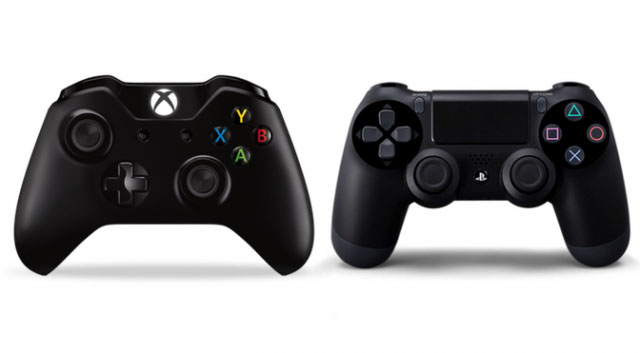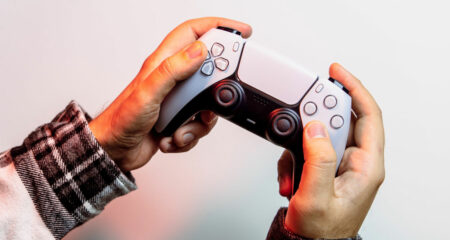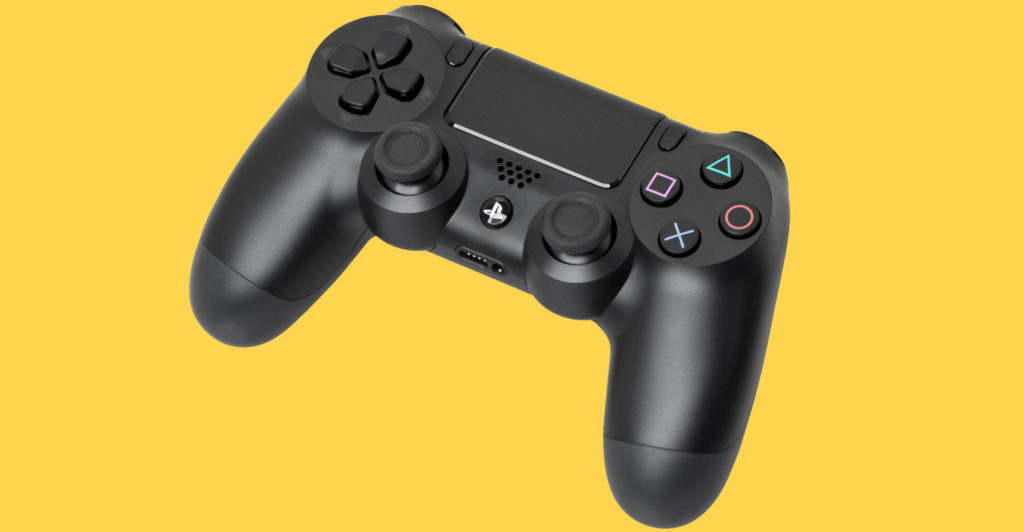Previous page: Interface and user experience

Control devices
This generation of console controllers is an ergonomic delight. Both are excellent, with your choice probably coming down to whether you prefer the PlayStation 4’s symmetrical analogue sticks or the offset layout of the Xbox One controller.
The One’s controller is basically a refined version of the Xbox 360’s controller, which is one of the best gaming controllers ever designed. As with many aspects of the Xbox One, some of the changes to the controller are for the worse. For example, the new shoulder bumper buttons don’t feel firm enough. But there are also some subtle improvements to the 360 design you know and love.
The triggers now feature rumble faintly, adding a new layer of tactile feedback to games. The analogue sticks are tight, precise and springy, with a smaller dead zone — improvements that you’ll notice when you switch between the 360 and One controllers. Like the 360’s controllers, the One’s is also powered by AA batteries, getting a decent life out of a set of disposables or rechargeables.
The PS4’s DualShock 4 (DS4) is a quantum leap in quality and comfort over the DualShock 3. The D-Pad is as exact as ever, while the analogue sticks have been massively enhanced. Now, I’m finding myself pulling off headshots on a Sony console with the same precision I took for granted from the 360.
The shoulder triggers and bumpers, too, are improved. The DS4 also has a couple of superb features that I miss when I game on another device — the large touchpad used for inventory screens, in-game menus, etc as well as the headphone jack. There’s a built-in speaker — gimmicky, but used to amusing effect in games like Resogun.
The lightbar on the front of the DS4 — which is used in tandem with a PlayStation Eye camera for motion control — can be a bit distracting when it reflects in your screen. And the life of the built-in rechargeable battery — less than eight hours — is another annoyance.
The next generation of Microsoft’s Kinect motion sensing camera was meant to be a major differentiator for the machine. Kinect 2.0 features far more advanced voice recognition and motion sensing capabilities than the first model, which shipped as an optional accessory for the Xbox 360.
I’d recommend going for the cheaper Kinect-less version, unless you’re crazy about dancing, fitness and motion-controlled sports games. Aside from the eccentric adventure game D4, most attempts to use Kinect in hardcore games have been lame so far. Microsoft itself appears to have given up on the technology as a gaming interface.
Watch video: PS4 exclusive Bloodborne is destined for cult classic status
Switching on the Xbox One with a voice command and having the system recognise you and log you on is neat, but I’m not sure it’s worth the premium cost. When it works well (and it doesn’t always work for me), Kinect allows you to navigate the interface quickly using voice commands.
The PS4’s camera has proven to be unexpectedly popular with video streamers, but there aren’t many games that integrate use it for motion controls. That will probably change if Project Morpheus, the upcoming Sony virtual reality technology, proves to be a success. The camera also supports a limited range of voice commands – far fewer and with less intelligence than the Xbox One’s Kinect.
Winner: Close, but the PS4
Next page: Exclusive games




